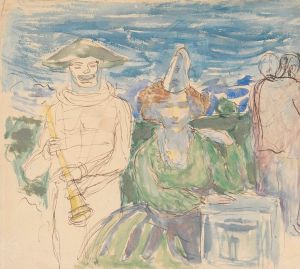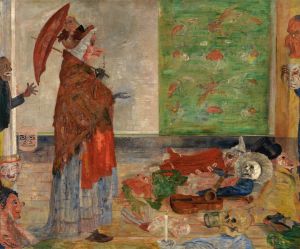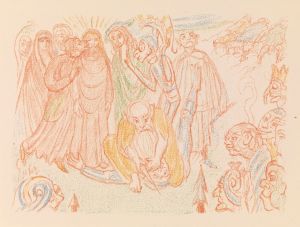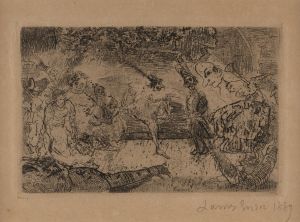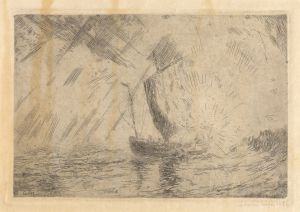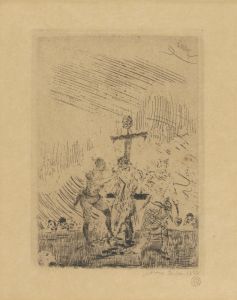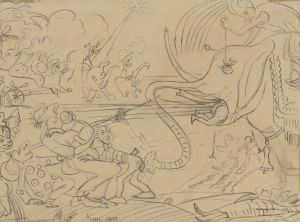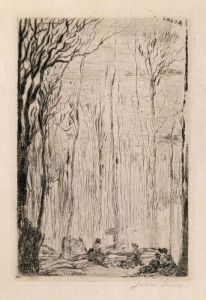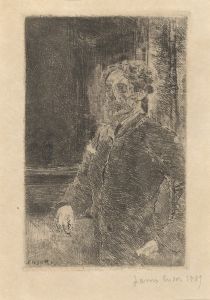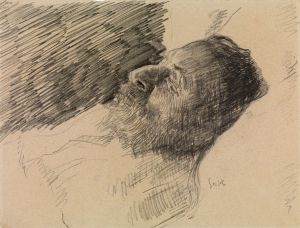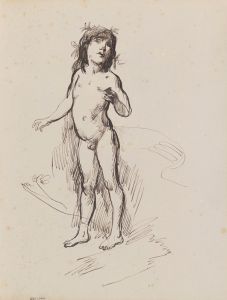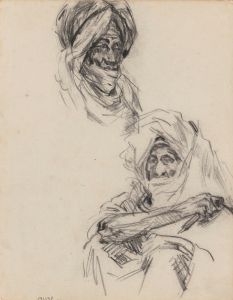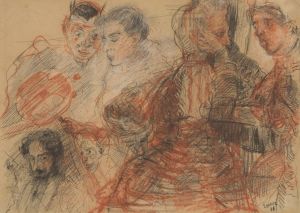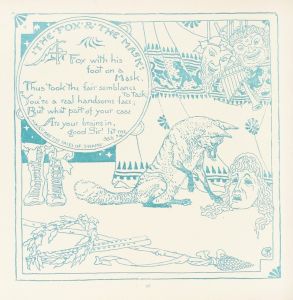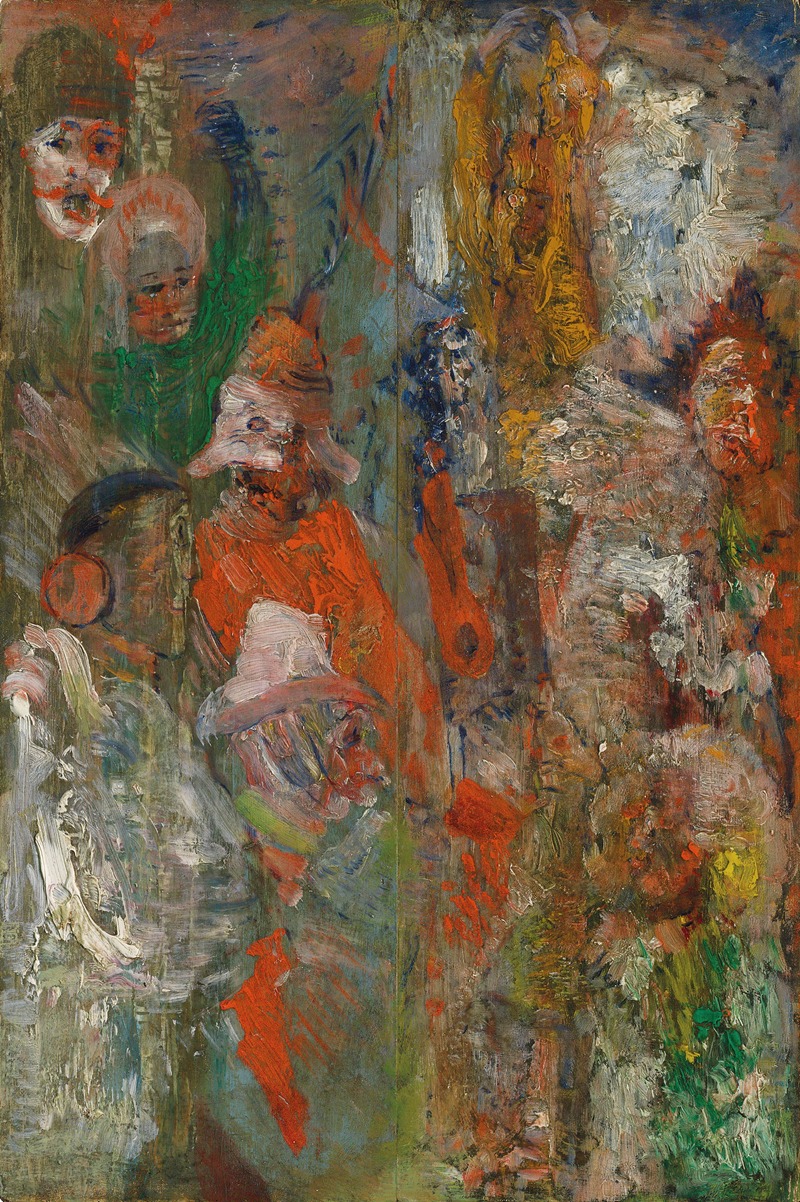
Scène carnavalesque
A hand-painted replica of James Ensor’s masterpiece Scène carnavalesque, meticulously crafted by professional artists to capture the true essence of the original. Each piece is created with museum-quality canvas and rare mineral pigments, carefully painted by experienced artists with delicate brushstrokes and rich, layered colors to perfectly recreate the texture of the original artwork. Unlike machine-printed reproductions, this hand-painted version brings the painting to life, infused with the artist’s emotions and skill in every stroke. Whether for personal collection or home decoration, it instantly elevates the artistic atmosphere of any space.
James Ensor, a prominent Belgian painter and printmaker, is well-known for his unique and often eccentric works that blend elements of satire, fantasy, and the grotesque. One of his notable paintings is "Scène carnavalesque," which reflects his fascination with masks, carnivals, and the absurdities of human nature. Ensor's work is often associated with the Symbolist movement, and he is considered a precursor to Expressionism and Surrealism.
"Scène carnavalesque" is a vivid example of Ensor's exploration of carnival themes, which he frequently revisited throughout his career. The painting captures the chaotic and vibrant atmosphere of a carnival scene, filled with masked figures and bizarre characters. Ensor's use of masks is particularly significant, as they serve as a metaphor for the hidden aspects of human identity and the duality of appearance versus reality. This theme is recurrent in Ensor's oeuvre, where masks often symbolize the superficiality and hypocrisy of society.
The painting is characterized by its bold use of color and dynamic composition. Ensor employs a bright and varied palette, with striking contrasts that enhance the sense of movement and energy within the scene. The figures are depicted in a somewhat distorted manner, adding to the surreal and dreamlike quality of the work. This distortion is a hallmark of Ensor's style, reflecting his interest in the grotesque and the fantastical.
Ensor's upbringing in Ostend, a coastal city in Belgium, played a significant role in shaping his artistic vision. The city's lively carnival traditions and the influence of his family's curiosity shop, which sold masks and other exotic items, provided a rich source of inspiration for his work. These elements are evident in "Scène carnavalesque," where the carnival setting serves as a backdrop for exploring deeper philosophical and existential themes.
Throughout his career, Ensor faced both criticism and acclaim. His unconventional style and subject matter were initially met with resistance from the conservative art establishment in Belgium. However, he gradually gained recognition and became an influential figure in the avant-garde art scene. Today, Ensor is celebrated for his innovative approach and his ability to capture the complexities of the human condition through his art.
"Scène carnavalesque" exemplifies Ensor's mastery in blending humor with a critical perspective on society. The painting invites viewers to reflect on the nature of identity, the masks people wear, and the often absurd theater of life. Ensor's work continues to resonate with audiences, offering a timeless commentary on the human experience.
In summary, "Scène carnavalesque" by James Ensor is a significant work that encapsulates the artist's fascination with carnivals, masks, and the grotesque. Through its vibrant colors, dynamic composition, and symbolic imagery, the painting offers a compelling exploration of the themes of identity and societal critique, solidifying Ensor's legacy as a pioneering figure in modern art.





